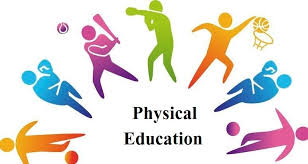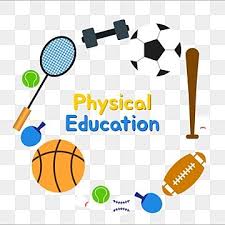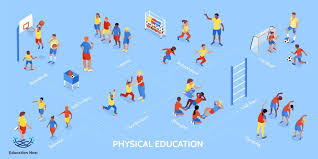
Introduction to Physical Education
Physical Education Importance is a vital part of the learning process that focuses on developing students’ physical fitness, motor skills, and overall health. It encourages students to stay active through structured exercises, games, and sports. The subject is not only about physical activity but also about teaching discipline, teamwork, and self-confidence. With growing health issues among youth, physical education plays a major role in promoting a healthy lifestyle. It helps students balance their academic and physical growth effectively.
Importance in Schools

Schools play a critical role in shaping the lifestyle of students, and physical education is an essential component of that journey. It promotes physical fitness, improves concentration, and reduces stress levels. Students who participate in regular physical activities perform better academically as they develop better focus and energy. also teaches teamwork, leadership, and time management skills. Hence, it is an important subject that supports both body and mind development.
History and Evolution

Physical education has existed since ancient times, beginning with military training and cultural games. In early civilizations like Greece and Rome, physical training was considered essential for strong armies and healthy societies. Over the centuries, the focus shifted from military fitness to health, recreation, and education. During the 19th century, schools began introducing physical education as a formal subject. Today, with modern research, it is considered a scientific field that combines health, psychology, and sports.Physical Education Importance
Physical Education and Student Health
One of the most important contributions of is improving student health. Regular physical activity strengthens the heart, improves blood circulation, and maintains body weight. It helps students avoid lifestyle diseases such as obesity, diabetes, and hypertension from an early age. Moreover, exercise boosts immunity, keeping students energetic and less prone to illness. By developing healthy habits in school, students carry the benefits into their adult life.
Benefits for Mental Wellbeing

Physical education is not just about physical health but also plays a vital role in mental wellbeing. Regular exercise releases endorphins, also known as “happy hormones,” which reduce stress and anxiety. Students engaged in physical activities feel more positive, motivated, and emotionally stable. It also helps in improving sleep quality and reducing depression symptoms. Moreover, teamwork and social interaction during games build confidence and reduce feelings of loneliness.
Role in Personality Development
Personality development is an important outcome . Students learn values such as discipline, respect, cooperation, and leadership. Sports and group activities enhance communication skills and teach students how to handle success and failure gracefully. Physical challenges build resilience and confidence, shaping a strong character. With better fitness, students also feel more self-assured in their daily lives. Hence, it contributes to the overall grooming of young individuals.
Physical Education vs Sports – What’s the Difference?

While many people confuse with sports, the two are different. Physical education is a structured subject that includes fitness training, health education, and physical activities to promote overall wellbeing. Sports, on the other hand, are competitive games played individually or in teams. Physical education teaches lifelong fitness habits, whereas sports focus on skill development and competition. Both are important, but physical education has a broader role in shaping students’ lifestyles.
Challenges in Implementing Programs
Despite its importance, physical education faces several challenges. Many schools lack proper facilities, playgrounds, or trained instructors. In some regions, academic pressure overshadows physical activity, leading schools to ignore PE classes. Budget constraints also limit sports equipment and resources. Additionally, some parents and students undervalue PE compared to academic subjects. Overcoming these barriers requires policy changes, awareness, and investment in infrastructure.
Future of Physical Education in the Digital Age
With the rise of technology, physical education is evolving rapidly. Digital tools, fitness apps, and virtual training programs are being integrated into PE classes. Online platforms allow students to track their progress and learn new exercises from home. Virtual reality and interactive games are making physical activity more engaging. However, the challenge is to balance screen time with real physical movement. The future of physical education lies in combining technology with traditional fitness activities to keep students active and healthy.
Conclusion
Physical education is not just a subject but a foundation for a healthy and balanced life. It improves physical health, sharpens the mind, and shapes personality through discipline, teamwork, and resilience. In schools, it plays a key role in reducing stress, increasing focus, and encouraging lifelong fitness habits. Although challenges exist in its implementation, the future of looks bright with the integration of technology and modern teaching methods. Every student deserves access to quality to grow into a strong, confident, and successful individual.
FAQs
Q1: What is the main purpose of physical education?
The main purpose of is to improve students’ physical fitness, mental wellbeing, and social skills through structured activities.
Q2: Why is physical education important in schools?
It helps students stay healthy, improves focus on studies, teaches teamwork, and builds confidence for overall personality development.
Q3: How does physical education benefit mental health?
Physical activities release endorphins that reduce stress, anxiety, and depression while improving mood and concentration.






Leave a Reply